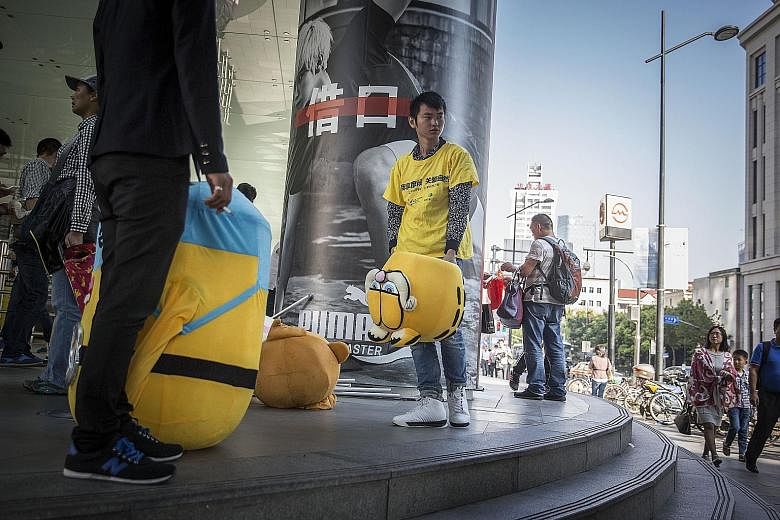BEIJING • China's consumer inflation fell last month, official figures showed yesterday, underlining sagging sentiment as growth slows in the world's second-largest economy and adding to calls for further stimulus.
The consumer price index (CPI) increased 1.6 per cent last month from a year earlier, slowing from a 2 per cent rise in August.
The producer price index (PPI) fell 5.9 per cent, extending its streak of negative readings to 43 months, the National Bureau of Statistics (NBS) said.
The fall was mainly driven by easing food price rises, NBS said.
With consumer inflation well below the government target of 3 per cent all year, the central bank has further capacity to spur lending even after cutting interest rates five times since November.
A property downturn has capped prices for households, while industrial overcapacity, a commodity rout and sluggish global demand have weighed on factory prices. Asian stocks retreated with industrial metals.
"The still-weak PPI highlights the severe overcapacity problem and sluggish domestic investment demand," said Nomura economists in a research note.
Moderate inflation can be a boon to consumption as it pushes buyers to act before prices go up, while falling prices encourage shoppers to delay purchases and companies to put off investment, both of which can hurt growth.
Beijing is trying to transform the country's economic model to a more sustainable one where consumers replace exports and state-led investment as the key driver of expansion.
China has already launched a wave of measures since late last year, including cutting benchmark interest rates, though some analysts said such moves have not been as effective as in the past, when the economy was more tightly controlled, exports were strong and debt levels were much lower.
Analysts said that more needs to be done to put a floor on the slowdown.
"We reiterate that China needs to ease monetary policy," ANZ analysts said in a report, calling for a further reduction in bank reserve requirements - which should boost lending - before the end of the year, plus another interest rate cut "if CPI falls further".
As investment in infrastructure slowed, Chinese growth rate hit a 24-year low of 7.3 per cent last year and has softened further this year, with gross domestic product increasing 7.0 per cent in each of the first two quarters. Data on Tuesday showed imports plunged by a fifth year on year last month as slowing growth wreaks havoc on global commodities prices. Exports also slipped in the same period, according to Tuesday's figures.
The government is due to release September industrial output, retail sales and investment data on Monday, along with third-quarter gross domestic product.
Many economists expect July-to-September economic growth to drop below 7 per cent for the first time since the global financial crisis.
AGENCE FRANCE-PRESSE, BLOOMBERG

